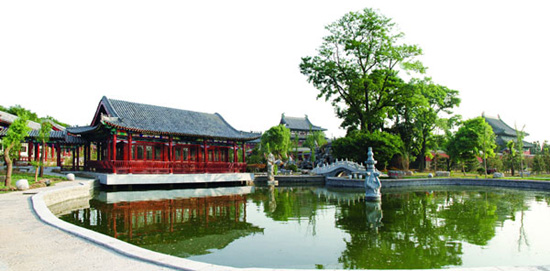
 |
| (China Daily) |
The nine stairs - nine is a homonym for longevity in Chinese - exiting the hall containing the 500-year-old two-faced Buddha altar are a millennium old and haven't been restored. They're intact but slick - polished glossy by 1,000 years of ever-trickier tromping. Trees planted at about the time the stairs were carved shade them.
Also, the temple's swooping eves are meant to resemble a lion's claw from a bird's-eye view.
The town in which Longxing was constructed is also unique in that it preserves an architectural timeline of the country's development.
Zhengding is a jumble of buildings from every period following the Sui's founding, including modern constructions. It's the kind of place where a structure finished yesterday could exist beside one constructed 1,600 years ago and be surrounded by edifices raised in various centuries between.
The town's development was largely propelled by its prominence as a stopover for emperors' pilgrimages, especially in the Qing Dynasty (1644-1911). Many rulers, including Qing emperor Kangxi (1654-1722), left their mark and chiseled the town's legacy in stone with their inscribed calligraphic works.
While these writings contributed to Zhengding's acclaim, Zhengding's acclaim contributed to writing, as such seminal authors as Lu Xun penned its praises.
History has left behind a mishmash of artifacts from figurines to cannonballs.


















 Singer in spotlight after blog post
Singer in spotlight after blog post


![]()
